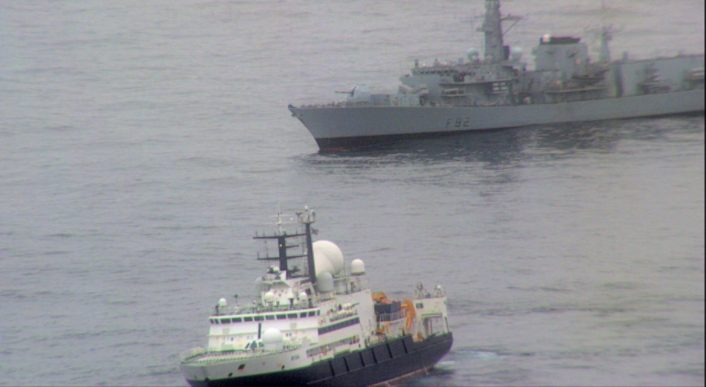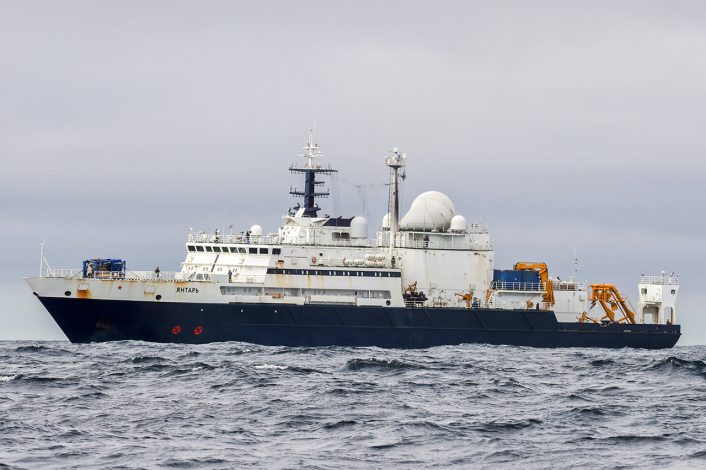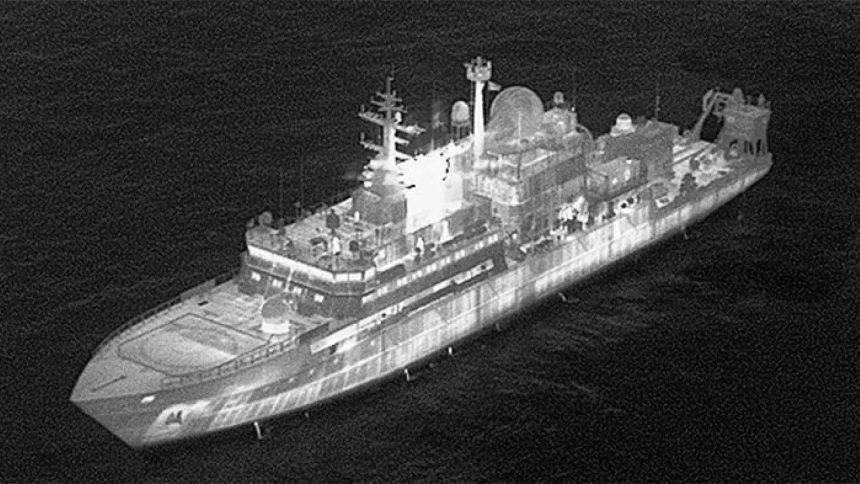The UK Defense Secretary said the Russian ship pointed lasers at a RAF P-8 Poseidon while on the edge of UK waters off Scotland.
The Russian intelligence ship Yantar is currently sailing on the edge of UK waters off the coast of Scotland, monitored by the Royal Air Force and the Royal Navy. During a surveillance mission, a RAF P-8 Poseidon Maritime Patrol Aircraft (MPA) was targeted by a laser from the Russian ship, said the UK Defense Secretary John Healey on Nov. 19, 2025.
Shining lasers at an aircraft is extremely dangerous and can have serious consequences, possibly blinding the pilots and putting at risk the safety of the flight. We don’t know what type of laser was used, however both Russia and China routinely aim laser at surveillance aircraft overhead trying to force them away from the area.
BREAKING: Defence secretary John Healey says British forces were hit by lasers while tracking a Russian spy ship on the edge of UK waters north of Scotland.https://t.co/P3KxMSLHAM
📺 Sky 501, Virgin 602, Freeview 233 and YouTube pic.twitter.com/1CKIXFFhgd
— Sky News (@SkyNews) November 19, 2025
What happened
“We deployed a Royal Navy frigate and RAF P-8 planes to monitor and track this vessel’s every move, during which the Yantar directed lasers at our pilots,” said Healey during a press conference. “That Russian action is deeply dangerous. This is the second time this year that this ship, the Yantar, has deployed to UK waters.”
It is unclear when this happened, with Yantar also not broadcasting its position on AIS. However, the BBC reports that it “is understood the episode occurred within the last two weeks.” According to official photos and the report by Navy Lookout, the British vessel is the Type 23 frigate HMS Somerset.
Britain releases images of the Russian spy ship on the edge of UK waters that aimed lasers at RAF pilots
“We see you, we know what you’re doing and if the Yantar travels south thus week we are ready,” @JohnHealey_MP says pic.twitter.com/tKUBHCDN4U
— Deborah Haynes (@haynesdeborah) November 19, 2025
The Defense Secretary warned Russia that the UK is ready to deal with the ship should it enter UK waters. “Whenever the Yantar comes into British wider waters, we track it, we deter it… my message to Russia and to Putin is this: we see you, we know what you’re doing, and if the Yantar travels south this week, we are ready,” said Healey.
The Secretary added he changed the Royal Navy’s rules of engagement so that it could follow the Yantar more closely while in the UK’s “wider waters.” The military is ready to counter a possible escalation: “We have military options ready should the Yantar change course. I am not going to reveal those because that only makes President Putin wiser,” Healey said.

The Russian embassy responded with a statement, as reported by the BBC, saying it was “not interested in British underwater communications.” The statement continued: “The actions of our country do not touch interests of the UK and they are not aimed at undermining its security. However, London, with its Russophobic path and increasing militaristic hysteria leads to further degradation European security, providing the premise for new dangerous situations. We call on the British side to hold off taking any destructive steps which might aggravate the crisis situation on the European continent.”
Yantar
The mysterious Russian intelligence vessel Yantar is no stranger to UK waters, having been a familiar sight through the maritime choke-point as well as in exercise areas off the coast for many previous years. In fact, within a year, the ship transited through the area for two times, in November 2024 and January 2025.
Officially, Yantar is operated by the Main Directorate of Underwater Research and used for surveillance. “It is part of a Russian fleet designed to put and hold our undersea infrastructure and those of our allies at risk,” Healey said, adding that it can “undertake surveillance in peacetime and sabotage in conflict.”

Also known as the lead ship of the Project 22010 class and officially classified as an “oceanographic research vessel,” Yantar has a length of 108 meters (354 ft) and a full displacement of 5,736 tons. The ship was launched in 2012 and entered service in 2015 after completing trials.
The exact capabilities of Yantar are relegated mostly to speculation, but it is known that the ship has spent time operating in the vicinity of important undersea cables. It is suspected by independent naval analyst HI Sutton that Yantar likely operates of remote underwater vehicles which could be used to intercept or even cut these communications cables, as well as disrupt other critical underwater infrastructure like sonar networks.









